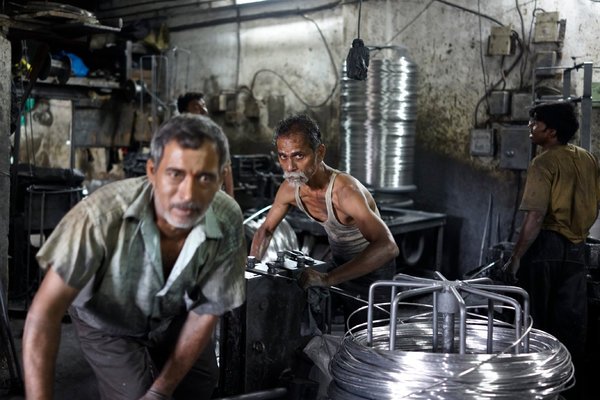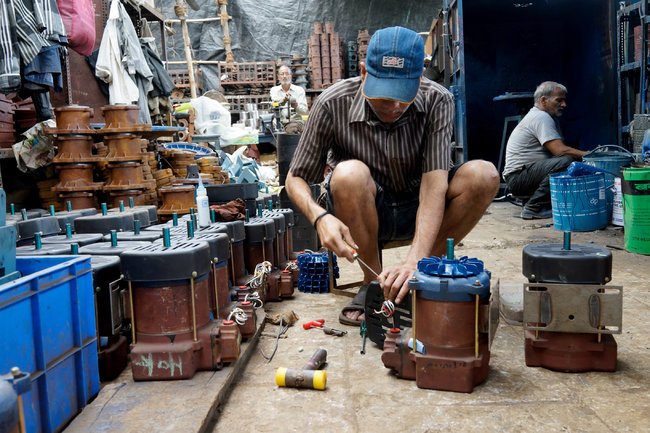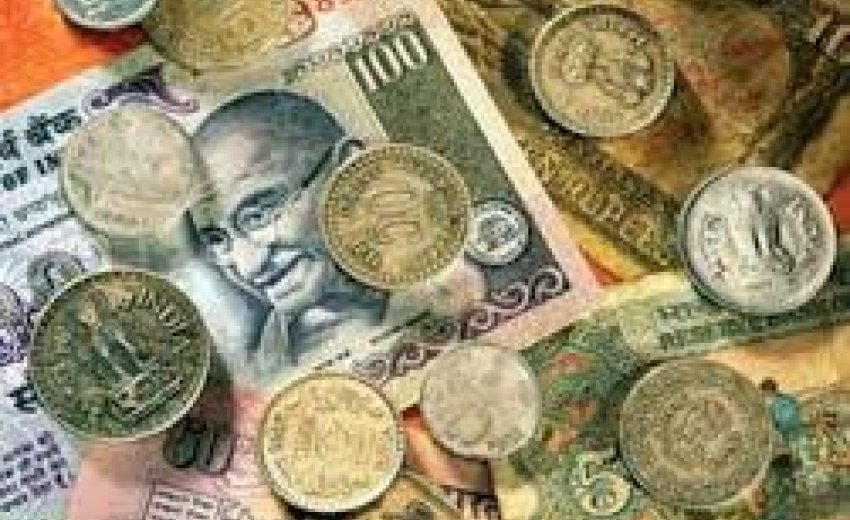 |
| Santosh Verma for The New York TimesWorkers at an aluminum wire factory in Mumbai. |
September 4, 2013: MUMBAI — India had seemed tantalizingly close to embarking on the same dash for economic growth that has lifted hundreds of millions of people out of poverty in China and across East Asia.
Its economy now stands in disarray, with the prospect of worse to come in the next few months.
Vinod Vanigota, a Mumbai wholesaler of imported computer hard drives, said sales dropped by a quarter in the last two weeks. The rupee, India’s currency, has been so volatile in recent days that he began revising his price lists every half-hour.
Business activity at Chip Com Traders, where he is the managing director and co-owner, has slowed so sharply that trucking companies plead for business. “One of the companies called today and said, ‘Don’t you have a parcel of any sort for us to deliver today?’ ” Mr. Vanigota said.
The economic decline has laid bare chronic problems, little remarked upon during the recent boom. An antiquated infrastructure, a sclerotic job market, exorbitant real estate costs and bloated state-owned enterprises never allowed manufacturing, especially manufacturing for export, to grow strong.
 |
| Santosh Verma for The New York TImes Ansons Electro Mechanical Works in Mumbai has kept fewer than 50 workers at each factory to avoid regulations. |
The real estate market is teetering after soaring to vertiginous heights over the last few years. Cranes on Mumbai’s skyline perch nearly immobilized as developers struggle for cash.
The things the emerging middle class coveted, Chevrolets, iPhones and foreign vacations, have all jumped sharply in price in recent weeks.
The price increases threaten to worsen consumer price inflation — already among the highest in Asia at an annual rate of almost 10 percent — and widen the country’s already large international trade deficit and government budget deficit.
India’s government is now bracing the country for a swift increase in the price of diesel fuel and other imported necessities priced in dollars. Diesel is the lifeblood of the Indian economy, from the trucks that crawl along the country’s jammed, potholed roads to the backyard generators that struggle to compensate for the high-cost yet unreliable electricity grid.
Some economists say that they hope India will have only a V-shaped economic downturn, with a rebound starting by early next year if a weak rupee rejuvenates India’s struggling exporters.
“India is not Greece — we never binged on debt on a grand scale,” said Ajay Shah, a prominent economist at the National Institute of Public Finance and Policy in New Delhi.
The root of the problem is India’s failure to create a vibrant industrial base with the strength to export. As Western buyers scour Asia for alternatives to increasingly expensive Chinese factories, India and its enfeebled manufacturing sector are mostly ignored.
Soeb Z. Bandukwala, a managing director of Ansons Electro Mechanical Works, a maker of water pumps and electric motors, wonders how a recovery can arrive, given India’s structural problems. He runs a business that has been in his family since 1967 and has grown to four factories.
Yet he keeps each factory at fewer than 50 workers and has maintained some metal grinding machines and other equipment in use since the 1970s without replacement. His worry is that if he exceeds 50 workers or surpasses certain benchmarks for total investment, he will become subject to extensive labor legislation.
“There is a fear, and the fear is the labor laws,” said Mr. Bandukwala, who is also a regional leader in the Confederation of Indian Industry.
Infrastructure is also a problem. Ansons is only 35 miles from the port through which it exports machinery to Europe. Yet trucks require four to seven hours to reach the port because promised expressways have never been built.
Speeds barely faster than walking at least help protect pumps and motors from harm. “If the speed is greater, damage will take place because of the potholes,” Mr. Bandukwala said.
Poor infrastructure has also driven up costs for industrial real estate in India, which are high compared with China’s. Just in the last five years, China has opened 5,800 miles of high-speed rail routes and 400,000 miles of highways of two or more lanes. That has allowed tens of thousands of factories to move to smaller towns in the interior with much lower land costs.
India has been unable to open up its interior the same way, building half as many miles of highways over the same period and no high-speed rail routes. At the same time, rent control and other land regulations make it extremely difficult to tear down and replace even the most dilapidated buildings.
So cities like Mumbai have ended up with dozens of square miles of mold-stained, low-rise buildings with spots of bright green fungus, interspersed by the occasional skyscrapers that were somehow built. Remote, outer fringes of factories and office buildings have sprouted on what was once farmland.
The acute shortage of real estate less than a day’s drive from ports has produced steep real estate prices and rents. Challenge Overseas, a trousers manufacturer, paid $1.3 million five years ago to buy the 20,000-square-foot top floor of a decrepit, four-story factory building with blocked fire escapes on a muddy alley on the outskirts of Mumbai, and sold it for $2.7 million last month. The floor underneath, the company’s 60-employee factory, sold for $410,000 in 2003 and is now valued at $1.2 million.
Roads and bridges to inland towns are not the only infrastructure problem. Shakti Industries, which thins and cuts aluminum wires for jewelry manufacturers, pays the equivalent of 15 to 18 cents per kilowatt-hour for electricity. In China, even after a round of price increases coming in late September to pay for more clean energy, factory owners will pay half as much.
Shakti has only seven employees. Yet it is regulated by more than a dozen government agencies, each of which sends a separate inspector each year before issuing licenses for things as diverse as electricity use and water pollution. Many of the inspectors demand bribes, said Vipul S. Kamani, the managing director of Shakti.
High real estate and electricity costs leave businesses with very little money to pay workers and remain competitive in the global markets for garments and other manufactured goods.
Arun Prajapati, 21, a migrant worker at a fabric fusing machine at Challenge, said that he earned about $100 a month, just a fifth of what Chinese workers earn these days.
He pays $9 a month for rent and electricity for his sleeping space on the floor of a 10-foot-by-10-foot room that he shares with five other migrant workers in a nearby shanty. He spends $38 a month for a subsistence diet of roti bread, lentils and, once a week, some chicken or eggs. He sends his meager savings to his widowed mother in their home village in central India.
“With expenses rising each month, things are only getting harder and harder,” he said. “I am just trying to get through life.”
One private sector industrial giant that bet heavily on an economic takeoff in India is the Essar Group, based in Mumbai. In the last five years it has invested nearly $18 billion to build one of the world’s largest refineries and one of the world’s biggest steel mills in northwestern India while tripling capacity at its ports and quadrupling the output of its power plants.
But the company now plans to collect income from these projects instead of building more, and it is even selling three steel-related businesses to pay down debt.
Haseeb A. Drabu, a former government economic planner and bank chairman who is now Essar’s chief economic adviser, said that at Essar and across India, “I don’t see any fresh wave of investment.”
Neha Thirani Bagri contributed reporting.
---------------------------------
Related Article:
India’s Economic Crisis
by SIMON JOHNSON
http://economix.blogs.nytimes.com/2013/08/29/indias-economic-crisis/?ref=global
.....excerpts from the article - full article
While the generic description above is a helpful framework, the Indian situation has important special features, as Devesh Kapur of the University of Pennsylvania and Arvind Subramanian, my colleague at the Peterson Institute for International Economics, have stressed. In particular, policy makers have not made the mistake of trying to cling to a fixed exchange rate (i.e., there is no explicit commitment to peg the rupee to a precise rate relative to the dollar).
As a result, the rupee is able to depreciate without too much drama, and this by itself should, over time, help to reduce imports and increase exports. India’s foreign debts are mostly private, and the government’s fiscal position, while not strong, is also not as weak as seen in Latin America in the 1980s or some European countries more recently.
(To be precise: there is a large annual budget deficit – the headline number is around 9 percent of gross domestic product – but recent growth and a significant degree of inflation mean that debt relative to G.D.P. is projected to be around 66 percent by the end of 2013. This is gross debt, as reported in the I.M.F.’s latest Fiscal Monitor; the I.M.F. does not compile data on net government debt.)
Indian foreign exchange reserves remain at relatively strong levels, at least in comparison with past crisis experiences elsewhere.
This is not to play down the pressures. The effect of exchange rate depreciation is to push up domestic inflation, in part because much of India’s oil is imported (and world oil prices are in dollars, so depreciation immediately pushes up the domestic price in rupees).
-----------------------------
 About the author:
About the author:
Simon Johnson, former chief economist of the International Monetary Fund, is the Ronald A. Kurtz Professor of Entrepreneurship at the M.I.T. Sloan School of Management and co-author of “White House Burning: The Founding Fathers, Our National Debt, and Why It Matters to You.”
